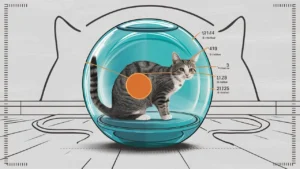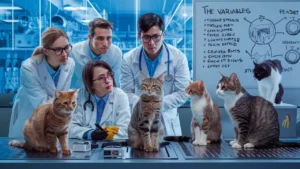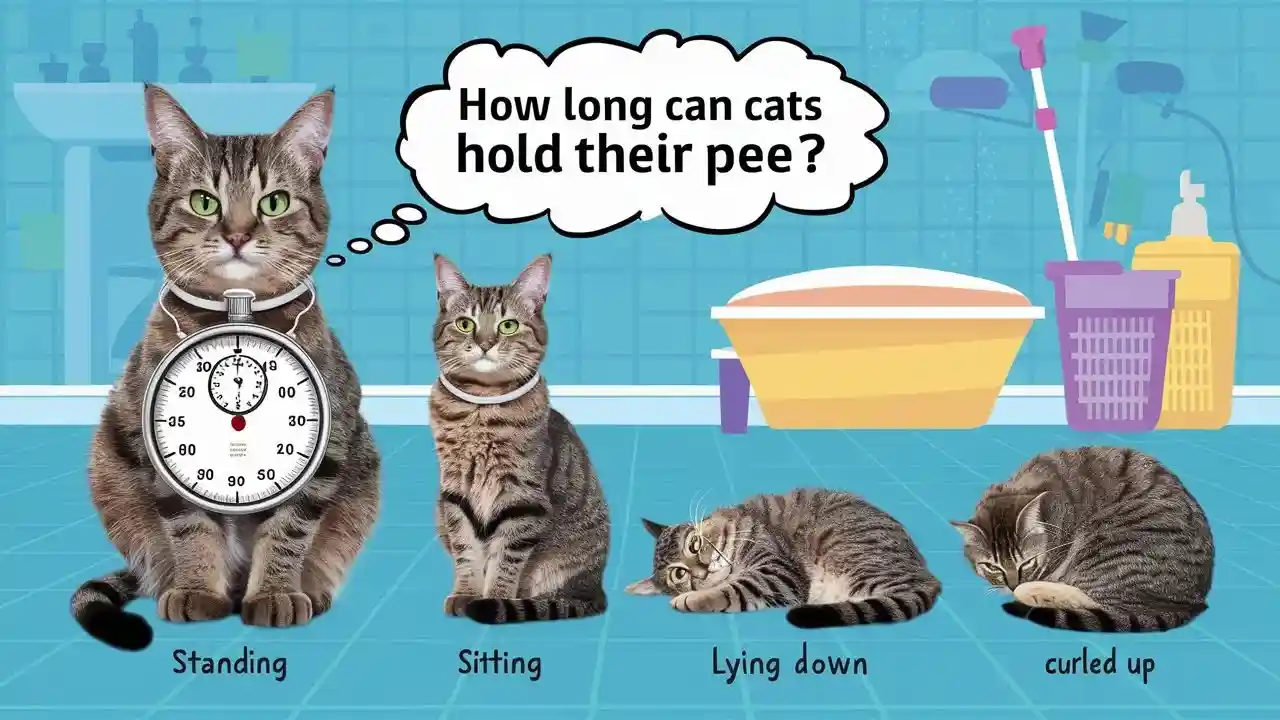At any point, have you pondered your tom cat’s restroom propensities? It’s ordinary to be involved in approximately how long they can keep their pee. Felines, much like people, have their cutoff factors close to bladder control.
Understanding this will help you give significant consideration to your catlike associate. When it modifications from one pussycat to any other by using massive, grown-up felines, it can preserve their pee for around 12 to 24 hours.
This can be exchanged contingent upon age, well-being, and admittance to a clutter box. Guaranteeing your tom cat has a perfect, open clutter field and ordinary restroom breaks can assist with forestalling any mishaps and keep your fuzzy partner cheerful and sound.
So, every time you are considering your pussycat’s washroom plan, bear in mind that they’ve their cutoff factors as nicely!
Felines can typically hold their pee for around 24 to forty-eight hours. Nonetheless, this may exchange given variables like age, well-being, and admittance to clutter bins.
It’s essential to guarantee your pussycat has ordinary admittance to smooth litter bins to forestall any uneasiness or medical issues connected with preserving their pee for a doubt, long time.
Understanding Cat Bladder Capability

Before we get into the low down of pee-keeping capacities, it’s crucial to comprehend how a pussycat’s bladder features. Like humans, pussycats have a bladder that shops pee till now, which could be the right time to move.
Notwithstanding, there are some key contrasts. Felines have a better potential to be aware of pees, which implies they don’t cross as often as we do.
Additionally, their bladder muscle tissues are regions of electricity that they can keep for extended periods if critical.
Factors: How Long Can Cats Hold Their Pee?

Like people, a few variables can influence how long a feline can hold its pee. Age, well-being, and diet all play a part. Youthful cats and more established felines might have less command over their bladder than solid grown-ups.
Also, specific ailments, such as urinary parcel diseases or bladder stones, can cause regular pee or criticalness.
Normal Holding Times
How long might your average, sound feline hold its pee at any point? Indeed, it depends. Most felines can go somewhere within 12 to 24 hours without expecting to assuage themselves.
This can differ due to individual variables like age, well-being, and diet. A few felines might have to go all the more habitually, while others can hold it for more extended periods.
Signs Your Feline Requirements to Go
While felines are fabulous at concealing their uneasiness, there are a few signs you can pay special attention to that show your shaggy companion needs to utilize the litter box. On the off chance that you notice your feline whimpering or walking about, hunching down over and over without creating any pee, or licking their genital region unnecessarily, it’s a decent sign they need to go.
Methods for Advancing Solid Pee-Holding
As a capable feline proprietor, there are steps you can take to advance sound bladder capability in your catlike companion. Ensure they approach perfect, new water consistently to energise appropriate hydration.
Furthermore, it gives an ideal litter enclosed in a calm, open area. Felines are predictable animals, so keeping their washroom routine reliable can assist with forestalling mishaps.
When to Look for Veterinary Consideration
If you notice any progressions in your feline’s restroom propensities, it’s dependably brilliant to talk with your veterinarian. Regular pee, stressing to pee, blood in the pee, or mishaps outside the litter box could indicate a hidden medical problem that needs consideration.
Early mediation is critical to forestalling severe difficulties.
The Significance of Litter Box Availability
Guaranteeing that your feline’s litter box is effectively available is urgent for advancing solid pee-holding propensities. Felines are predictable animals and like to utilize a perfect, calm, and confidential region for their restroom needs.
Suppose the litter confine is concealed in a hard-to-arrive corner or is continually encircled by commotion and action. In that case, your feline might abstain from utilizing it, prompting mishaps elsewhere in the house.
Place the litter in a peaceful, low-traffic region where your feline feels excellent and safe, and ensure there is more than one box accessible, particularly in multi-feline families.
Furthermore, keep the litter box clean by scooping it every day and supplanting the litter consistently to empower customary use.
What Makes a Feline Not to Pee?
Your kitty’s inability to pee reduces to two situations: an absence of pee creation or your feline not peeing either because they are holding the pee or can’t pee. Nonetheless, since felines can cover their indications of sickness and attempt to seem to sound more often than not, you can’t neglect peeing troubles in your feline.
Look at the variables that trigger this issue.

Issues With the Litter Box
The area, cleanliness, sort of litter, and quantity of litter boxes can influence your feline’s peeing propensities, causing an adjustment of the ordinary example. Different variables that can add less significantly incorporate abrupt routine changes, diet changes, drugs, moving homes, or outsiders’ presence in the house.
It might begin as hesitance to utilize the litter box. However, it can lead to a more severe condition.
Urinary Plot Infection
Cat Lower Urinary Plot Infections (FLUTD) are a bunch of illnesses and problems influencing felines’ urinary framework. These circumstances incorporate bladder irritation, contaminations, stones, and blockages.
A feline with such circumstances ordinarily struggles with peeing. They might express themselves, take turns peeing, or miss the litter box.
Kidney Issues
Unexpected issues in your feline’s kidney capability can significantly affect your feline’s well-being. It is similar to the more normal issue called ongoing kidney illness.
At the point when intense kidney injury happens, the standard filtration comes out of nowhere and quits, causing aggregation of poisons and side effects in your feline’s circulatory system.
Intense kidney injury can have many causes, like diseases, urinary impediments, or harm from poisonous plants or radiator fluid. Sadly, it can have lethal results whenever left untreated.
Your feline will display different indications of illness, like an absence of hunger, torpidity, spewing, and looseness of the bowels.
Injury
Your feline will quit peeing if they get a physical issue in their lower back that harms the sensory system of the bladder and the urethra. Wounds like falls, fender benders, or profound tainted injuries can hurt your feline’s pelvic nerves, which are responsible for the urinary parcel’s helpful control.
Therefore, your catlike companion might foster troubles and quit peeing.
Conclusion
In conclusion, felines can regularly hold their pee for somewhere between 12 to 24 hours. Be that as it may, it’s essential to watch out for your fuzzy companion’s washroom propensities and give ordinary admittance to a perfect litter box. If you notice any progressions in their way of behaving or indications of uneasiness, talk with a veterinarian to guarantee their well-being and bliss.
FAQs(How Long Can Cats Hold Their Pee?)
What are the Side Effects of a Feline with Lower Urinary Lot Illness?
While issues with the litter box and a decreased craving or thirst might influence a feline’s peeing design, clinical reasons are the most well-known justification behind felines’ peeing issues.
This implies your feline’s body might show starting signs that can caution you and assist with combatting what is happening. Be frightened if:
The kitty cries, wails, or whines while peeing
Your feline stays by or in the litter box without peeing
The catlike continues to lick under the tail
Hunching down to pee, yet nothing emerges
The feline has an enlarged or rigid mid-region just beneath the rib confine
There are modest quantities of pee with horrendous spots
The kitty continues to stow away
You notice laziness, spewing, and sickness
The feline is purposefully missing the litter box.
Feline paw divider
Will Felines Hold Their Pee For the time being?
You might see a vacant litter enclosed in the morning, meaning your kitty didn’t utilize it in the short term. However, this ought not to be a free pass, not to have a litter box accessible short-term! Indoor felines ought to continuously approach their litter box.
Is It OK to Secure A Feline in A Room Around the evening time?
Kitties ought to continuously have a litter box accessible at any place they are resting. Hence, if you want to keep your feline secured somewhere in the house, they ought to have a litter confine accessible in case they need to utilize it in the short term.
ALSO READ : CATS CARE
